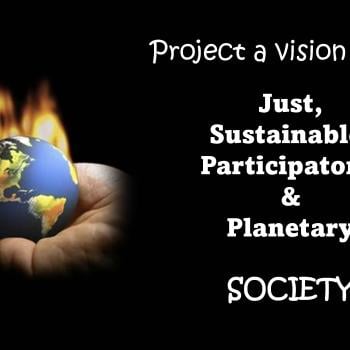The Chaos Machine, Social Media, and Public Theology
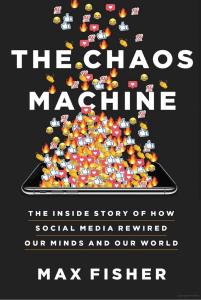
I’m currently reading a book I find as dramatic as disturbing. It’s The Chaos Machine, by Max Fisher. Fisher’s thesis is that social media changes the way we think.
Now, just how does social media change the way we think?
Recently, I asked my two step grandsons, who are college age: “how many hours per day do you spend looking at your cell phone screen?” Their answer: six to eight hours per day. Well, if this is typical of Generation Z, then we should expect widespread mind alteration. But, just what does the digitized Z mind look like?
Might we think of the digitized Z mind as a sea change in human thinking such as that experienced by our ancestors about 5000 years ago? That’s when the dominant oral-aural culture was invaded by writing-reading culture. Oh, yes, at first it was only the elite who learned to read and write. But, over time many people learned reading skills. And, this revolutionized civilization. Now, I ask: does the new digitized Z mind rival that previous revolution in scope and depth?
As it turns out, this is not Max Fisher’s question. Nor his answer. Rather, his question is more specific: how does social media affect moral responsibility in society? His answer is devastating: social media exacerbates our worst human proclivities for outrage and violence. Social media is so divisive that it has become a chaos machine.[1]
Reddit’s subreddit hate communities such as “WatchNiggersDie,” “GasTheKikes,” and “RapingWomen,” are obvious extremes. What is less obvious yet powerfully influential is the algorithmic mechanism on platforms such as Facebook or YouTube by which you and I get persuaded to become morally outraged and brought to the brink of mob violence.
The danger posed by social media companies is not due to its fake news. Rather, social media incites system-wide radicalization, reality distortion, and polarization.
 “Social platforms are unnaturally rich with sources of moral outrage; there is always a tweet or news development to get angry about, along with plenty of users to highlight it to a potential audience of millions. It’s like standing in the center of the largest crowd ever assembled, knowing that, at any moment, it might transform into a mob” (Fisher 2022, 97-98).
“Social platforms are unnaturally rich with sources of moral outrage; there is always a tweet or news development to get angry about, along with plenty of users to highlight it to a potential audience of millions. It’s like standing in the center of the largest crowd ever assembled, knowing that, at any moment, it might transform into a mob” (Fisher 2022, 97-98).
In The Chaos Machine, Fisher shows how Facebook specifically set off events surrounding the Arab spring, the genocide of the Rohingya in Myanmar, and the recent violence in Sri Lanka. Social media exacerbates mob psychology at countless flash points so that the result is social chaos. Social media is a chaos machine.
What propels this? Advertising income gained from hours of engagement. Social media is like a fast-moving locomotive fueled by advertising revenues that capitalize on outrage-generated dopamine. The digitized Generation Z mind is dopamine enhanced. That is Fisher’s contention.
Before opening the book, I had speculated wrongly that Fisher’s contention might be something like Marshall McLuhan’s, namely, the medium is the message.
If you want more resources on Public Theology, click here.
The Medium is the Message

“The medium is the message.” That’s what Marshall McLuhan told us in his 1964 blockbuster book, Understanding Media (McLuhan 1964).
“The medium is the message. This is merely to say that the personal and social consequences of any medium—that is, of any extension of ourselves—result from the new scale that is introduced into our affairs by each extension of ourselves, or by any new technology….Let us return to the electric light. Whether the light is being used for brain surgery or night baseball is a matter of indifference. It could be argued that these activities are in some way the “content” of the electric light, since they could not exist without the electric light. This fact merely underlines the point that the medium is the message because it is the medium that shapes and controls the scale and form of human association and action.”
The light bulb has no intellectual content, to be sure. Yet, as a medium that turns nighttime into reading time, the light bulb increased literacy in society for nearly a century. Advance in literacy began to subside only when television came along in the 1950s. Is today’s social media like yesterday’s light bulb in this respect? No.
McLuhan’s treatment of communication fascinated me when I first read it. It rang so true. I recall (without double checking) McLuhan reporting on how the shift from a primarily oral-aural culture to a writing-reading culture perhaps 5000 years ago reshaped our thinking apparatus. Non-readers in an oral-aural culture experience time as a continuing present, for example. When writing and reading become introduced to a culture, the sense of time changed. When large numbers of persons in a society become readers, then a strong sense of the passage of time emerges and history is born. Civilized culture could now shape its self-understanding in terms of historical epochs.
Thinking Ancient Thoughts Today
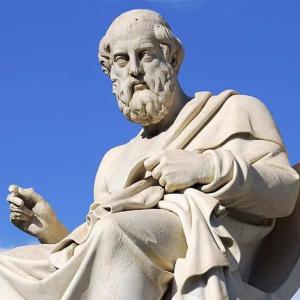
How is the medium the message here? Because what is written lasts longer than the lives of the writers. Because today’s generation can read the thoughts of those long dead. The past becomes a reality different from the present, even though related to the present.
I recall as a college sophomore reading the Dialogues of Plato. I read at poolside between swims. I became so excited that I would walk around with book in hand, sometimes reading passages out loud. What excited me was the realization that Plato’s very own thoughts were in my mind. Plato, now dead 2400 years, was thinking again through my mind. What for Plato were eternal verities—such as justice, truth, and beauty—became the framework of my own value system down to the present day. Historical time is alive in my personal consciousness.
In short, the medium of reading is itself a message. I could think today with thoughts introduced by the minds of yesterday.
With critical consciousness, I can distinguish Plato’s thoughts from my thoughts, to be sure. Yet, Plato’s thoughts live on, so to speak, when I repeat Plato’s thoughts in my own mind. Plato’s horizon of understanding and my horizon of understanding have fused to a certain degree. This means that Plato now thinks through me. Plato lives on through what hermeneutical philosopher Hans-Georg Gadamer would call Wirkungsgeschichte, or effective history (Gadamer 1965). History is alive.
It is writing and reading that make this historicized form of human consciousness possible, perhaps even unavoidable. The medium of the written word has become the force which re-structured both the classical and the modern mind.
What is happening today with social media is that you and I and Generation Z minds do not re-think the thoughts of Plato. No. Rather, you and I and all our Generation Z friends re-think the thoughts of extremists, mass murderers, terrorists, and, worst of all, advertisers.

The Chaos Machine via the Algorithmification of “We” versus “They”
When I wrote the first of my two books on sin, Sin: Radical Evil in Soul and Society, I sought to understand why in-group versus out-group thinking leads to scapegoating, cruelty, and violence. That the divide between “we” and “they” leads to violence is simply observable. But, why do we humans behave this way? Well, we’ll set that question aside for the moment. Instead, we’ll look at scapegoating in the chaos machine.
Scapegoating the outsider and going to war against the outsider is something Jesus thought to be ungodly. Human, yes. Godly, no. “Love your enemy,” he said in the Sermon on the Mount. (Matthew 5:43).
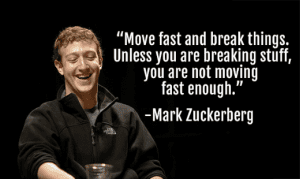 What Facebook has learned is that by exacerbating the we-vs-they divide the company can increase the amount of time we spend engaged with social media. The recommendation engine at Facebook and other platforms route us link by link toward the more radical sites purveying conspiracy theories. Conspiracy theories anger us. When we’re angry, we spend more time watching the screen. We see more advertising.
What Facebook has learned is that by exacerbating the we-vs-they divide the company can increase the amount of time we spend engaged with social media. The recommendation engine at Facebook and other platforms route us link by link toward the more radical sites purveying conspiracy theories. Conspiracy theories anger us. When we’re angry, we spend more time watching the screen. We see more advertising.
The engagement metrics mean more profits for the social media company. But, you and I are left seething in our rage. Social media has invented an unparalleled outrage machine, a chaos machine.
“The algorithmic logic was sound, even brilliant,” observes Fisher in The Chaos Machine. “Radicalization is an obsessive, life-consuming process. Believers come back again and again, their obsession becoming an identity, with social media platforms the center of their day-to-day lives. And radicals, driven by the urgency of their cause, recruit other radicals” (Fisher 2022, 65)
By no means could we say social media is responsible for original sin. But, it seems clear that the Silicon Valley geniuses have discovered a way to make a profit off our base human impulses.[2]
The Chaos Machine: From Outrage to Scapegoating to Cruelty
In my treatments of sin, I followed St. Augustine in positing that you and I are fundamentally motivated to do the good. Despite original sin, our natural disposition is to choose the good. The violence we exact on others is almost always done in the name of the good. We dare not think of ourselves as sinful or evil. So, in our pursuit of the good we tell ourselves we are good while we crush those evildoers under our foot. I called this self-justification coupled with scapegoating.
In The Chaos Machine, Fisher reports that Facebook and similar platforms exacerbate our indignation over those profane wrongdoers targeted by conspiracy theories. Our shock over those wrongdoers rises like cigarette smoke into a large cloud of mob outrage. Scapegoating rhetoric reigns. We are all placed on the brink of violence. Oh, it feels so very good to be good when embattled against the wrongdoer!

“Those moral-emotional choices seemed reliably to serve a social purpose, like seeking peers’ approval, rewarding a Good Samaritan, or punishing a transgressor. But the instinctual nature of that behavior leaves it open to manipulation. Which is exactly what despots, extremists, and propagandists have learned to do, rallying people to their side by triggering outrage—often at some scapegoat or imagined wrongdoer. What would happen when, inevitably, social platforms learned to do the same?” (Fisher 2022, 87)
Fisher, a reporter for the New York Times, is almost doing theology for the theologian as he analyzes the chaos machine of social media. What is ordinarily counterintuitive to us yet transparent to Fisher is that you and I pursue evil in the name of the good. Outrage is the way we tell ourselves with maximal emotion that we are damned good!
Further, outrage tells us that we can be cruel to wrongdoers with impunity. This mechanism which I have called self-justification coupled with scapegoating is exactly what social media engineers have discovered and are exploiting.
“Brain scans find that, when subjects harm someone they believe is a moral wrongdoer, their dopamine-reward centers activate. The platforms also remove many of the checks that normally restrain us from taking things too far. From behind a screen, far from our victims, there is no pang of guilt at seeing pain on the face of someone we’ve harmed. Nor is there shame at realizing that our anger has visibly crossed into cruelty” (Fisher 2022, 97).
Oh, it feels so good to be right and to be cruel to a wrongdoer! Dopamine flow persuades us that this is the case. And social media turns on the dopamine faucet.
Silicon Valley geniuses have discovered just how the mechanism of human sin works. When will they discover repentance?
Allies in the Struggle Against the Post-Truth Swarm
Recently, I may have been aiming my arrows at the wrong target. I’ve been targeting the truth question. Down deep, everyone wants the truth. Right? Well, that’s what I’ve been assuming. If this is the case, then all we need do is raise up the banner of truth and everyone will join the parade. Right? Maybe not.
More specifically, I’ve been trying to enlist scientists, skeptics, and theologians into raising up the truth banner together. Here are some recent attempts.

“The Power of Lies and the Lies of Power,” (Peters 2018)
“Allies in the Struggle Against the Post-Truth Swarm“
What is Truth in Science and Theology? Part One
What is Truth in Science and Theology? Part Two
After reading Max Fisher’s The Chaos Machine, I now wonder if I’ve underestimated the scope and impact of social media. Like a locomotive engine, social media is a behemoth of a machine with such momentum that the truth question is not likely to alter its track.
Nor does curiosity about the truth turn on the dopamine faucet like moral outrage does.
The Chaos Machine in Public Theology

I have been approaching the truth question within social media as a public theologian engaged in discourse clarification and worldview construction. I think of public theology as conceived in the church, critically reasoned in the academy, and offered to the broader culture for the sake of the common good.
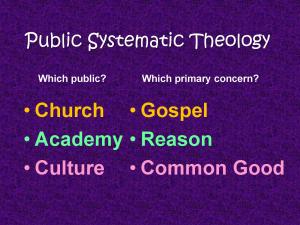 How might a public theologian engage the social media phenomenon? Let’s look at some examples.
How might a public theologian engage the social media phenomenon? Let’s look at some examples.
Religion professor James McGrath celebrates sees both blessings and curses in social media. “What the internet does is expand the reach of our connectedness as well as enhancing its constancy.” Oh, yes, and we need to guard against its misuses too. “People of faith can bring their ancient wisdom into these critical discussions proactively,” says evangelical Patheos columnist Michael Paulus.
The destructive impact of social media is that it dampens the regularity and policing of emotions performed by traditional social rituals, says Connor Wood. The cure? More Religious Studies.
Patheos columnist, Jackson Wu, contends that social media replaces community with audience. It also opens us to a shame culture.
Might social media provide a medium for evangelism? You betcha! Become a commexpert under the tutelage of Meredith Gould at #chsocm or read her book with Liturgical Press, The Social Media Gospel.
Conclusion
“Hate never goes away,” said President Joe Biden on September 13, 2022. “Hate only hides” under the rocks. So, the president warned us: “do not give hate too much oxygen.” Social Media has been flooding hidden hates with oxygen.
Prompted by the publication of Max Fisher’s new book, The Chaos Machine, in this post I’ve explored the contention that social media is like a fast-moving locomotive fueled by advertising revenues that capitalize on outrage-generated dopamine.
Today’s sin from which the human species needs redemption is not ignorance. Switching on the light of truth will not save us from our current darkness. The dark cloud of social media is a product of the human will. Somebody’s will. Somebody has willed that the flow of advertising revenue be maximized through the flow of outrage-generated dopamine. The digitized mind of Generation Z is affected. Actually, all of us are affected.
Firing the arrow of truth at the speeding social media locomotive will only bounce off and fall uselessly to the ground.
What to do? I think I’ll turn off my computer screen and re-think Plato’s thoughts. Well, maybe for just a little while.
▓
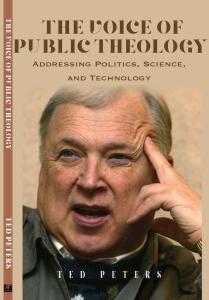
Ted Peters is a Lutheran pastor and emeritus seminary professor, teaching theology and ethics. He is author of Short Prayers and The Cosmic Self. His one volume systematic theology is now in its 3rd edition, God—The World’s Future (Fortress 2015). His book, God in Cosmic History, traces the rise of the Axial religions 2500 years ago. He has undertaken a thorough examination of the sin-and-grace dialectic in two works, Sin: Radical Evil in Soul and Society (Eerdmans 1994) and Sin Boldly! (Fortress 2015). Watch for his just published, The Voice of Public Theology (ATF 2022). See his website: TedsTimelyTake.com.
Ted Peters’ fictional series of espionage thrillers features Leona Foxx, a hybrid woman who is both a spy and a parish pastor.
▓
 [1] I am not sure I know just how QAnon is able to inspire the spate of murders prompted by its conspiracy theories. But, people are dying.
[1] I am not sure I know just how QAnon is able to inspire the spate of murders prompted by its conspiracy theories. But, people are dying.
References
Fisher, Max. 2022. The Chaos Machine: The Inside Story on How Social Media Rewired our Minds and our World. New York: Little, Brown, and Company.
Gadamer, Hans-Georg. 1965. Wahrheit und Methode. Tubingen: J.C.B. Mohr (Paul Siebeck).
McLuhan, Marshall. 1964. Understanding Media: The Extensions of Man. New York: McGraw Hill.
Peters, Ted. 2018. “The Power of Lies and the Lies of Power.” In Navigating Post-Truth Alternative Facts, by ed Jennifer Baldwin, 19-30. Lanham: Lexington.





